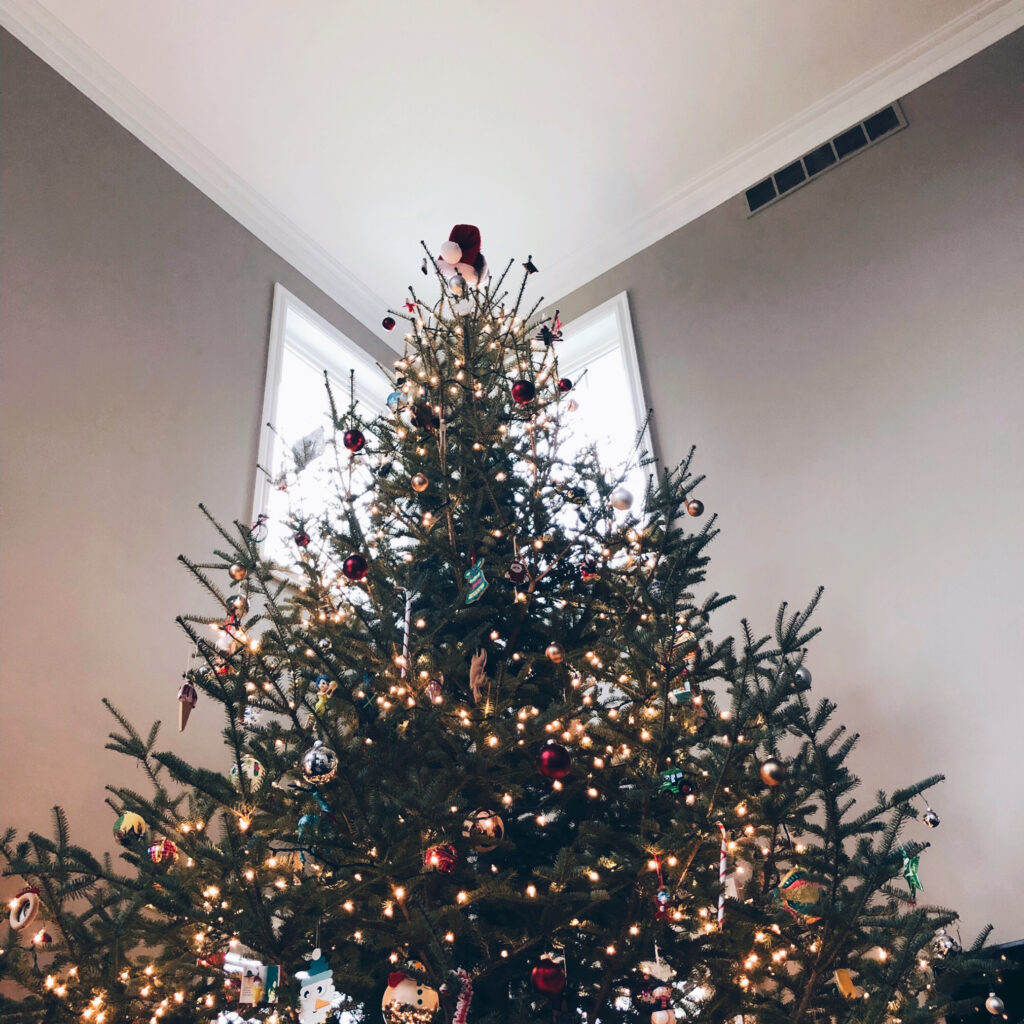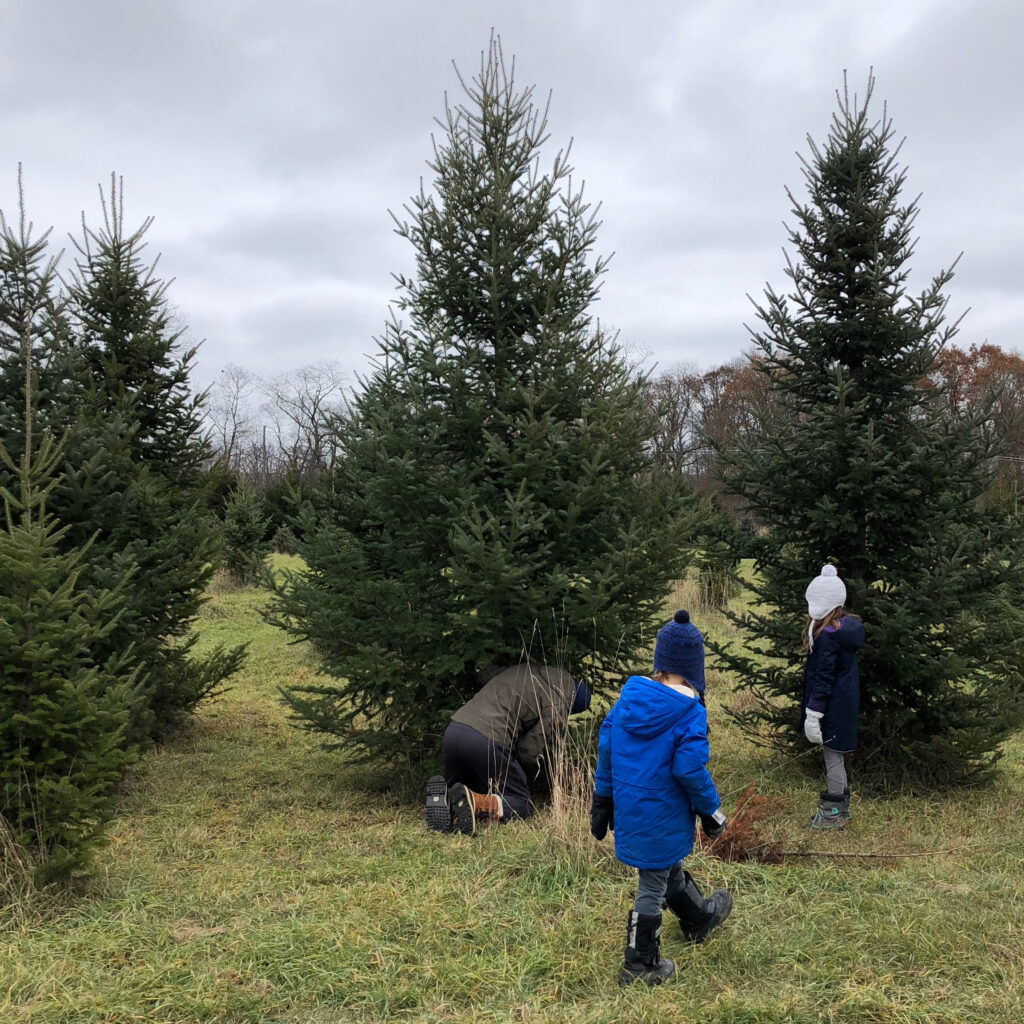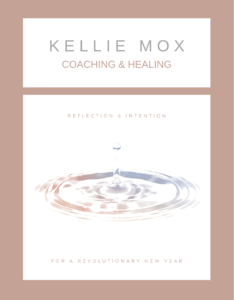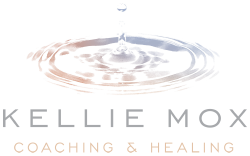I’m writing this post from my family room floor, comfortably snuggled in front of our colossal Christmas tree, and I can’t help but think about the power of vision and intention.
It’s December—just letting you know in case it snuck up on you, too. I’ve been thinking about my process for reflecting on 2019 and visioning for 2020. Side note: I don’t do resolutions. I do like to harness the energy of a new year to zoom out and look at the big picture, but I focus on vision and intention throughout the year as well. I’m not one to devote myself to a singular tool or method for this, so my approach differs from year to year, and it often happens after the holidays. While January isn’t too late, I’m feeling the pull to begin now. Maybe I’m rethinking my timing because I’m staring at this massive Fraser fir. Let me explain.
Our family of four loves our traditions. When my husband and I were dating, we started cutting our own Christmas tree, and this tradition continued after our children were born. We make a full day of the tree lighting and decorating, enjoying festive food, watching Christmas movies, and cheering on the University of Michigan football team while we adorn the tree. Not much has changed over the years. We laugh at Elf’s antics, my husband gets cranky if Michigan loses, and the kids impatiently wait to hang their ornaments while my arms tire from meticulously lighting the tree.

This size of our tree, however, has changed over the years. We moved into our current home in 2011 and graduated from eight-foot ceilings to a two-story family room, so our tree followed suit. I remember struggling to get ornaments on top of our ten-foot tree, a tree that my husband could carry in the house by himself. We thought it was huge then. Last year we struggled to get our tree through the door and had to move our couch for the season, because we couldn’t see the TV beyond its infiltrating branches. This year the tree is so tall and full that it covers part of the TV no matter where you sit.
The Importance of Intention
I thoroughly enjoy and appreciate the light our tree brings us through the holidays. The kids adore it, and they’re a big part of what drives our tree choice. Their intentions are clear before we hit the tree farm: they want the biggest Fraser fir we can mount on the car. My husband and I, however, head to the farm without clear intentions, so we leave with a tree that requires four people to carry it and a saw to cut off the branches just to get it out the door after the holidays. Luckily there’s no harm in having a ridiculously large tree, but I can think of a few reasons to have a smaller one.
While an unintentional tree is harmless, an unintentional life may be hazardous to your health and well-being. Life still happens in the absence of clear vision and intention. We can learn and grow from any circumstance or life event, but vision and intention impact those circumstances and how we approach them. Without intention you may, like me, find yourself with a monstrous tree in your space, unsure of how it got to this point. Whatever the tree represents in your life, know that it may keep growing unless you press pause, create a clear vision, and set some intentions.

It doesn’t look too big in the field!
Where to Begin
This is an invitation to begin now. Visioning and intention-setting don’t have to look a certain way. Maybe you set aside two hours for yourself before the new year to engage with it all at once. Maybe you take one tool and chip away at your vision and intentions over the next few weeks. However you approach it, I assure you that your year will look and feel different when you enter it with vision and intention AND when you follow it up with regular check-ins and practice (that’s for another post).
I’m playing with some new and old ideas as I dig into this process for myself. The last two years involved pondering powerful questions and drawing out themes from the answers to those questions to set a focus, or theme, for the year. I’ve appreciated having a theme, because it gives direction to my intentions, decisions, and actions.
Last year I did two exercises that resulted in two different themes, which I combined to create “In Service of Truth.” Here’s what this meant for me:
- Knowing and honoring my truths
- Expressing my truths in the world and allowing myself to be seen
- Serving others in their process of discovering and expressing their truths
- Honing my intuition and honoring that truth in my daily life
- Serving in alignment with my truths
- Honoring the wholeness in myself and others
I did a check-in mid-year to revisit my vision and intentions in ten areas of my life with this theme in mind. Now I’m reflecting on what felt good in each of these areas this year, and I’m exploring where I still want to grow, which will inform my theme for 2020.

I’m excited to share that I’ll have some of these exercises available to you soon, including some art journal exercises that supplement the more traditional writing prompts for theme, vision, and intention. I’m creating a workbook for newsletter subscribers, and I’m crafting a little giveaway that will include tools to support your visioning process for 2020. Be watching for more details! I can’t wait to support you in creating a clear and powerful vision for your healing and your life in 2020. For now, I invite you to start on your 2019 reflection with the questions I’ve included below.
Be sure to sign up for my newsletter so you can grab your copy of my visioning workbook when it’s available!
Reflection
You can write your answers to these questions in a standard list format or get creative by drawing or painting your list, writing a poem, or making a collage (or any other technique that resonates for you)!
- What felt life-affirming, easeful, meaningful, or just plain good in 2019? What do you want to remember, celebrate, and/or bring forward into 2020?
- What felt challenging, sluggish, forced, or draining in 2019? What do you want to leave behind in 2020?
- What were points of power, learning, and growth in 2019? What, if any, themes emerge from these learnings?


